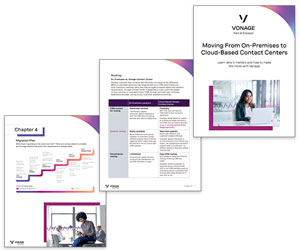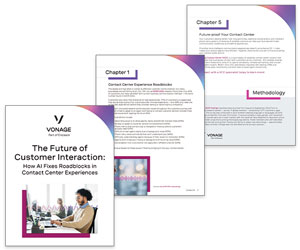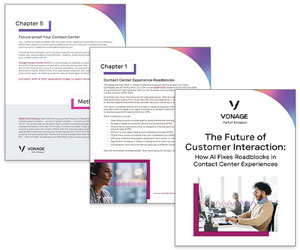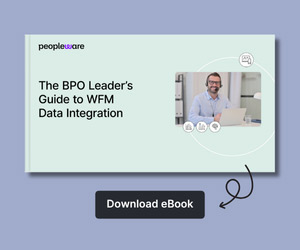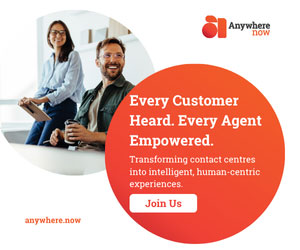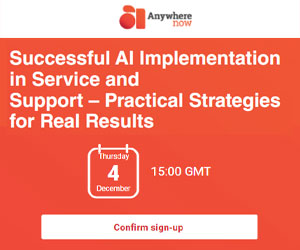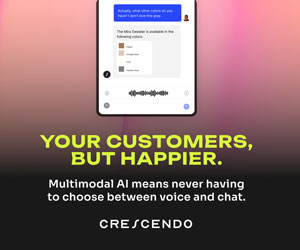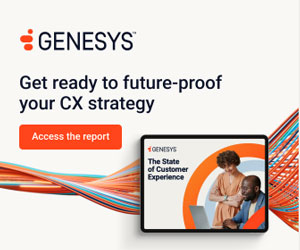There are approximately 6,500 call centres in the UK, supporting businesses to help drive sales and growth.
But a large proportion of these are relying on old technology. New technology can make life easier for both the agent and the customer.
Paul Turner provides some pointers….
1. Routing calls
Ensuring that calls go through to the right agent is one of the most crucial functions of a contact centre, as both callers and call handlers can get frustrated when calls are misplaced.
One common criticism is that it is rare for a caller to speak to the same agent more than once, even though the technology is in place to facilitate effective call routing. This ensures that follow-up calls are routed back to the original agent a caller spoke to, creating a much better relationship between customer and business, and quicker resolution of the call.
In a sales environment it is crucial to build those relationships, especially if a customer with a hot opportunity is calling back to the sales team. Having the call routed directly to the original agent helps to continue the dialogue and hopefully close the deal.
Similarly, in a service centre, where there is an element of troubleshooting it is much more effective in terms of resolution if there is continuity of contact between and agent and caller, rather than presenting the caller with lots of menu options when they phone.
2. Call recordings
Listening back to calls is an tedious task, which for traditional call centres can require the agent to spool through a tape of the previous 24 hours to find what they are looking for. It is extremely labour intensive and inefficient, with the added problem that if the caller is passed to another call centre, which could be in another country, the recording will not be retained in one source.
Integrated digital voice recording solutions enable the agent to make a simple and quick search under caller ID criteria, which brings up the call instantly as a digital file. That file would contain the entire call, even if the caller had been passed onto another call centre, anywhere in the world.
Call recordings can also be an integral resource for training purposes. It allows call centre managers to demonstrate to new and current staff what they deem to be a good and a bad call. This tangible evidence can improve the overall efficiency of ongoing training.
Another advantage of having recording functionality built into the contact centre solution is the ability to use it as evidence to resolve caller disputes. For example, if a complaint has been made by a customer, call centre supervisors have the ability to listen back over the relevant call and resolve any dispute in an efficient and cost-effective manner. In fact some of our customers have reported over 20 per cent customer service cost savings by using call recording in this manner.
3. Voice analytics
The latest innovations in voice analytics mean that it is now possible to search audio files such as call recordings for key words and phrases. This is set to be an invaluable tool for the contact centre of the future.
Contact centres usually have a low ratio of call supervisors to agents which means that it is not always possible for supervisors to monitor every call.
However, voice analytics software can be used to check compliance issues and monitor agent performance. For example, agents may be calling on behalf of financial services companies and need to comply with Financial Services Authority regulations. Using voice analytics software, companies can search specifically for those terms, and bring up all the calls that contain those words.
When it comes to promotions or special offers that need to be pushed by agents, supervisors can analyse calls to check that agents are mentioning them correctly.
4. Flexible location
The majority of contact centres are based in large offices requiring agents to physically be present to work. Cloud-based technologies can make it possible to set up a contact centre in any location as long as there is a phone, PC and an internet connection.
This allows agents to work from home, reducing commuting pressures and the carbon footprint of a business while providing staff with a greater work/life balance. Web-based business telephony solutions enable disaster recovery plans to be implemented, which is integral to keeping businesses running during adverse conditions.
The adverse weather last winter led to office buildings up and down the UK having to close. It would take weeks of upgrading and hardware implementation for traditional call centres to enable agents to work from home, but with web-based solutions customers can implement a disaster recovery solution and be up and running in less than an hour.
5. Multi-tab interface
An absence of integrated technology means that agents often have to put callers on hold while they search other systems for the information they need. This is frustrating to callers and agents, not to mention time consuming.

Paul Turner
A multi-tab integrated interface enables the agent to work much more efficiently; they can search for the information they need while the call is live without disrupting the conversation or losing the caller. A multi-tab interface also makes it even more straight forward for the agent to have all the relevant information at their finger tips to resolve a call promptly.
Agents are often berated for providing a poor quality of service, but is it any surprise if they don’t have the technology available to do their jobs efficiently?
Moving forward, organisations operating contact centres must look to review their technology and assess how it can support its business objectives, rather than it being a hindrance.
Paul Turner is the Chief Operating Officer at NewVoiceMedia (www.newvoicemedia.com)
Are your agents being held back by poor technology? Do you think that you should be reviewing your call centre systems? Call Centre Helper would be interested to hear your opinions in an email to Call Centre Helper [No vendor advertising please]
Author: Jonty Pearce
Published On: 8th Sep 2010 - Last modified: 30th Jun 2017
Read more about - Technology, Vonage











